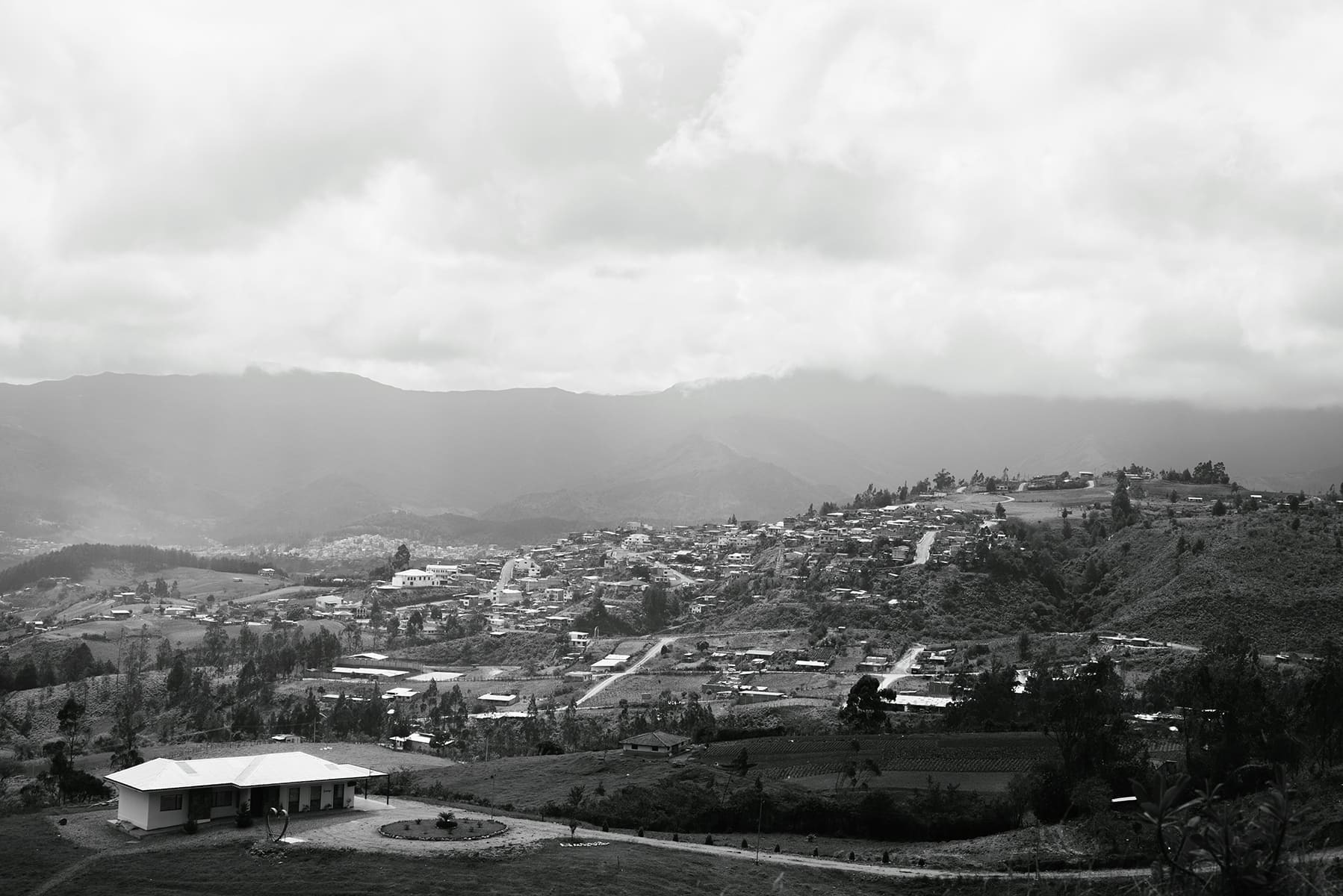Conceptual metaphor for the diagnosis of a peripheral neighborhood in Loja, Ecuador
DOI:
https://doi.org/10.18861/ania.2025.15.2.4063Keywords:
Neighborhoods, interpretation, urban space, urban diagnosis, analogyAbstract
In urban diagnostics, technological tools have been implemented that have allowed for more precise data collection, but the interpretation techniques are almost always the same, and a systematic and complex understanding of the neighborhood is sometimes lacking. This study was conducted in the Víctor Emilio Valdivieso neighborhood of Loja, Ecuador, located in a peripheral area, in a natural ecological protection context with physical-spatial and social challenges. The objective was to use the human body as a metaphor and relate it to urban systems and the concepts of apoptosis and necrosis developed in medicine. Qualitative techniques such as participatory workshops and others that allowed for creative interpretations to be explored through metaphor were added to the results. The social system was conceived as the nervous system; the urban fabric and block structure as the muscular system; the circulatory and respiratory systems as public and green spaces; and the road network and geomorphology were conceived as the skeletal system. Three temporal milestones were considered: 2014, 2020, 2023. The conceptual analogy allowed us to identify that the nervous and muscular systems began a necrotic process that must be treated, given the existence of unsafe spaces, as well as the loss of green areas in public spaces. It was also determined that a large part of the land should not have been urbanized. The respiratory and circulatory systems function healthily in an apoptotic process due to social organization and the presence of a still-functioning natural context. The skeletal system is considered to be in remission. In short, the resource used sparks creativity for urban analyses, as well as an understanding of their "state of health or disease" from a physical and socio-spatial perspective.
Downloads
References
ABUSAADA, H., ELSHATER, A. (2024). Stimulating architects’ mental imagery reaching innovation: Lessons from urban history in using analogies and metaphors. Ain Shams Engineering Journal, Volume 15, Issue 9. https://doi.org/10.1016/j.asej.2024.102933.
ALEJANDRO, J., CAMPOS, M., & OSUNA, E. (2023). La interdisciplinariedad del diseño mediante el aprendizaje colaborativo y basado en proyectos. Zincografía, 14, 111–130. https://doi.org/10.32870/zcr.v7i14.218
ARISTÓTELES, A. (1986). De anima (Sobre el alma). Londres: Penguin. https://scholar.google.com/scholar_lookup?title=De%20Anima%20&publication_year=1987&author=Aristotle.
CHAYAAMOR-HEIL, N., VITALIS, L. (2021). Biology and architecture: An ongoing hybridization of scientific knowledge and design practice by six architectural offices in France. Frontiers of Architectural Research, Volume 10, Issue 2, 240-262. https://doi.org/10.1016/j.foar.2020.10.002.
GIMÉNEZ, C., MIRÁS, M. y VALENTINO, J. (2011). La Arquitectura cómplice: teorías de la arquitectura en la contemporaneidad (1ª ed.). Buenos Aires: Nobuko.
HIGUERAS, E. (2009). La ciudad como ecosistema urbano. El reto de la ciudad habitable y sostenible. Madrid: Editorial DAPP. https://oa.upm.es/16625/1/Ecosistema.pdf
Instituto Nacional de Estadística y Censo [INEC]. (2010). Análisis de datos censales: Estructura
de la población. Redatam. http://redatam.inec.gob.ec/cgibin/RpWebEngine.exe/PortalAction?BASE=CPV2010
JOHNSON, S. (2003). Sistemas emergentes o que tienen en común hormigas, neuronas, ciudades y software (1ª ed. en castellano). Madrid: Turner Publicaciones, S.L.
KRIEGER, P. (2006). Paisajes Urbanos: imagen y memoria. México: UNAM, Instituto de Investigaciones Estéticas.
LI, K., & ZENG, H. (2024). Multidisciplinary parameters for characterizing the 3D urban morphology: An overview based on the relational perspective. Sustainable Cities and Society, 106(March), 105364. https://doi.org/10.1016/j.scs.2024.105364
MARTÍNEZ-VALDÉS, V., RIVERA, S., GONZÁLEZ, E. J., & Rivera, E. S. (2020). Parques urbanos: un enfoque Para su estudio como espacio Público, Urban parks: perspectives from studies of public space. Intersticios Sociales, 19, 67–86. https://orcid.org/0000-0001-8371-0996
MENDES, M., DARLING, A., HART, K., MORSE, S., MURPHY, R., & LANHAM-NEW, S. (2019). Impact of high latitude, urban living and ethnicity on 25-hydroxyvitamin D status: A need for multidisciplinary action? Journal of Steroid Biochemistry and Molecular Biology, 188(September 2018), 95–102. https://doi.org/10.1016/j.jsbmb.2018.12.012
Ministerio de Ambiente del Ecuador. (2012). Sistema de clasificación de los ecosistemas del Ecuador continental. Subsecretaría de Patrimonio Natural. Quito. https://www.ambiente.gob.ec/wp-content/uploads/downloads/2012/09/LEYENDA-ECOSISTEMAS_ECUADOR_2.pdf
Municipio de Loja. (2019). Plan de Desarrollo y Ordenamiento Territorial del Cantón Loja (PDOT). https://www.loja.gob.ec/files/image/LOTAIP/pdot-2019_2023.zip
NAGHIBI, M., FAIZI, M. y EKHLASSI, A. (2020). The role of user preferences in urban acupuncture: Reimagining leftover spaces in Tehran, Iran. Urbani izziv. Slovenia: Editorial Urbani izziv, 31(2), 114-126. https://doi.org/10.5379/urbani-izziv-en-2020-31-02-005
National Human Genome: Research Institute. (1989). Apoptosis. https://www.genome.gov/es/genetics-glossary/Apoptosis
PÉREZ, Ana. (2016). Acupuntura urbana: intervención en la ciudad y participación: cuatro experiencias [Tesis Doctoral, Universitat Politècnica de València]. https://riunet.upv.es/handle/10251/69334
Programa de las Naciones Unidas para el Medio Ambiente [PNUMA]; IIustre Municipio de Loja; y Naturaleza y Cultura Internacional. (2007). Perspectivas del Medio Ambiente Urbano: GEO Loja. Loja: PNUMA.
Real Academia Española [RAE]. (2014). Diccionario de la lengua española, 23.ª ed., [versión 23.7 en línea]. https://dle.rae.es
RICOEUR, P. (1981). Hermenéutica y ciencias humanas: ensayos sobre el lenguaje, acción e interpretación. Cambridge University Press. https://scholar.google.com/scholar_lookup?title=Hermeneutics%20and%20the%20human%20sciences&publication_year=1981&author=P.%20Ricoeur
RODRÍGUEZ, L., PAULSEN-ESPINOZA, A., e HIDALGO-DATTWYLER, R. (2020). Situar en el debate el contexto urbano. Aproximaciones bibliométricas desde el meta análisis de la literatura científica. Urbano, 23(41), 10-25. https://doi.org/10.22320/07183607.2020.23.41.01
TAMAYO, A. (1999). Teoría general de sistemas. NOOS. Revista del departamento de ciencias. Manizales: Editorial Universidad Nacional de Colombia - Sede Manizales, 8, 84-89. https://bit.ly/3xa295z
TURING, A. (1990). The chemical basis of morphogenesis. Bulletin of mathematical biology, 52, 153-197. https://doi.org/10.1007/BF02459572

Published
How to Cite
Issue
Section
License
Copyright (c) 2025 Silvia Alexandra Viñan-Ludeña, Alexandra Moncayo Vega

This work is licensed under a Creative Commons Attribution 4.0 International License.
The journal and its contents are licensed under the Creative Commons - Attribution 4.0 International License (CC BY 4.0). It is possible to copy, communicate and publicly distribute its content as long as the individual authors and the name of this publication are cited, as well as the publishing institution (Universidad ORT Uruguay).

